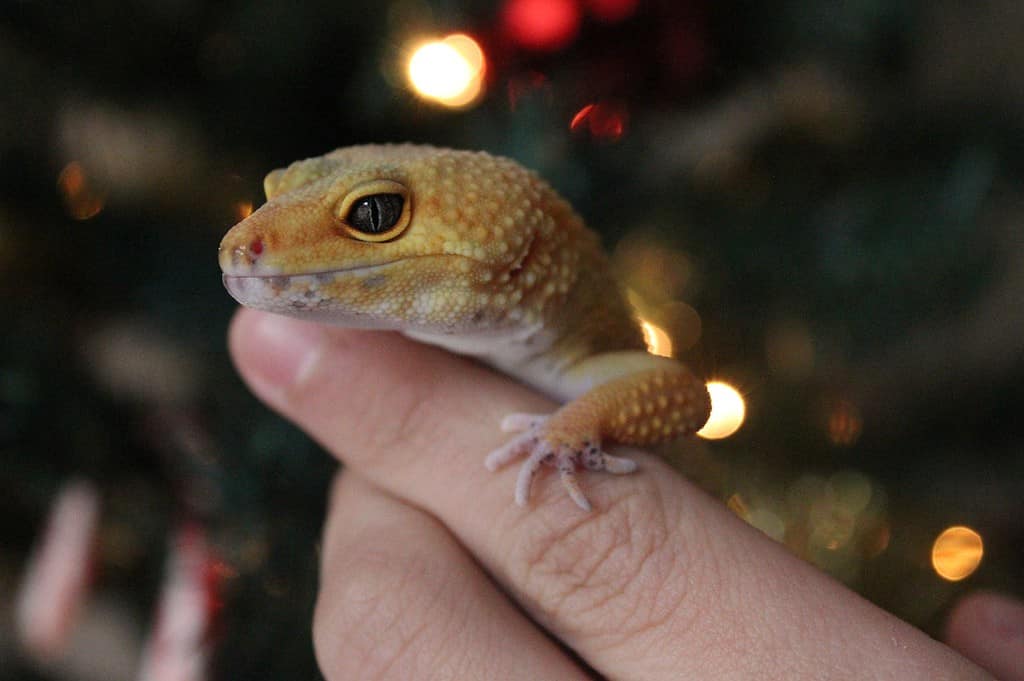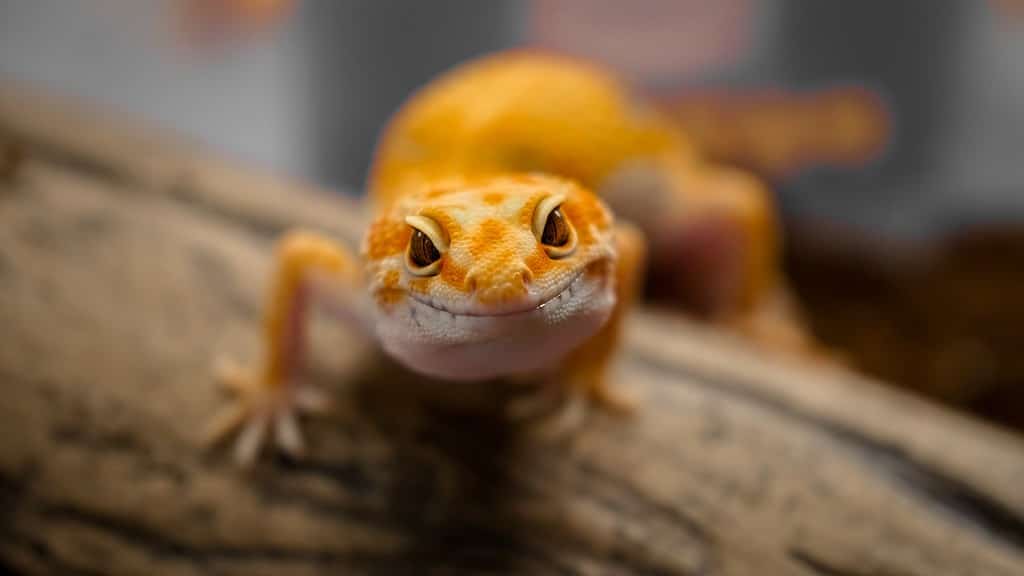Leopard geckos are one of the most popular pet reptiles because they are calm and easy to care for. They are resilient lizards with many interesting personalities. Leopard geckos are popular because of their personality, and you may wonder how you can breed them? Or how can Leos have babies?

Leos have babies when adult males and females copulate; after that, the females lay eggs, which Leopard Geckos can have babies when adult males and females copulate; after that, the females lay eggs, which ultimately hatch into juvenile or baby Leos. The Leopard geckos’ eggs’ gestation period is between 15-21 days. The Female can continue to lay eggs every few weeks over several months.
Leopard geckos are generally easy to breed, but you must do your homework to guarantee their safety and happiness.
In order for leopard geckos to reproduce successfully, specific parameters must be met, and you will need to ensure that they are housed in the appropriate environment.
This article provides a step-by-step procedure that makes breeding leopard geckos easy.
How do Leopard Geckos Have Their Babies?
Leopard geckos mate like most species. After that, the female gecko will deposit eggs, eventually developing into baby geckos. It is appealing to note that the temperature at which the egg is kept will influence the gender of the leopard gecko that ultimately emerges from the egg. Depending on the desired outcome, this can produce either male or female geckos.
The female leopard gecko lays eggs under rocks or logs in the wild. When the eggs are released from the female, they have not yet hardened, and it will take time for them to build the shell that will protect them. After that, the eggs are placed in an incubator for between six and ten weeks, depending on the temperature.
If the eggs are not incubated in a sufficiently wet substrate, they will dry out, and the developing gecko enclosed within them will expire as a result.
When Do Leopard Geckos Have Babies?
Leopard geckos typically reach sexual maturity between 18 and 24 months, weighing approximately 35 to 40 grams. The weight and size of a leopard gecko, similar to those of other species of reptiles, will indicate when it has reached sexual maturity.
To get leopard geckos to start reproducing, you need to house at least two females and one male in the same enclosure. Reduce the gecko’s cage temperature to 70-75°F for 4-6 weeks to increase breeding.
When is the Breeding Season of Leopard Gecko
Usually, Leo’s breeding season is from January to September, but they can be bred artificially anytime in captivity.
The Behavior Of Finding A Mate And Mating
When the male and female leopard geckos begin to circle each other, this indicates that they are getting ready to mate. This is often a quick process that might last between two and five minutes.
During the courting process, the male leopard gecko will approach a female gecko to express his interest in her. After that, the male will go around the female in a circle, at which point he will raise its tail or move it from side to side. The male will sprint towards the female after evaluating her and finding her appealing.
It is advised that you keep a careful eye on the courting because leopard geckos are known to engage in aggressive behavior toward one another at this time. If you are not there to separate them, this might result in severe injury for both parties.
Male leopard geckos rattle their tails when approaching a female. After then, the female gecko will turn around and respond to the approaches made by the male. When it comes time for her to mate, she will become completely still and look intently at the male. They will take some time to assess one another before the male stops rattling its tail and moves close to the female.
Leopard Gecko Sexing
It is essential to identify the gender of a gecko if you intend to breed leopard geckos, as this will affect the offspring.
Adult male leopard geckos have pre-anal pores that can be seen above the base of their tails and are often significantly bigger than females. These pores are reasonably straightforward to identify in adult species of leopard geckos.
Males are often bigger and heavier than their female counterparts. The V-shaped pre-anal pores may identify males on their tails. If you want to be positive, you should inspect the underside of the gecko’s body close to the base of its tail.
Producing Eggs
Sometimes females generate eggs before mating, sometimes after. This is based on the temperature as well as the specific female being studied. After mating, it usually takes the female anywhere from two to five weeks before she lays her eggs.
In most cases, the developing eggs can be seen through the skin of the female’s abdomen, and as the eggs become larger, the female will become noticeably heavy around her stomach. During this period, the attitude of the female may also alter. Generally, they become quite lazy, spending a lot of time laying near the warm end of the glass enclosure.
Producing eggs demands a lot of energy and calcium, increasing food and dusting every meal with calcium. In addition, you need to ensure that the female has access to a proper nesting box. The laying box should be 8 inches long with 3-4 inches of wet substrate.

Egg Laying
The average time between mating and laying eggs is between 2 and 5 weeks. A female may go without food for as long as a week leading up to the time when she lays her eggs. She may start digging (sometimes all around the tank) a few days before laying (perhaps looking for a good laying spot). This is especially prevalent in first-time females.
Usually, the female will deposit her eggs in the laying box you supply (although sometimes she may lay them straight on the sand or in the water bowl; some can be retrieved, but most are too late). The female needs peace to deposit her eggs, so don’t bother her. She will go into the nesting box, dig a hole, lay her eggs, and then cover them again.
Eggs typically lay in two clutches; however, first-time parents and older females may lay a single egg. It is common for first-year females to produce eggs that do not incubate well because they do not have enough experience to perfect the egg formula. However, some first-time breeding females deposit numerous eggs that hatch if properly incubated.
Again, the interval between clutches varies according to the female. It’s usual for there to be anywhere from 10 to 35 days between clutches.
After the female has finished depositing her eggs, she will most likely be quite hungry and consume a great deal of food. It’s crucial to provide her with enough nutrition and calcium to create her next clutch of eggs, which may have already begun to mature.
Egg Incubation
Because leopard gecko parents tend to consume their young, it is best to incubate leopard gecko eggs in a different location from the gecko parents.
To make the incubation media, combine water and medium in 1:1. After that, bury Leo’s eggs, so they are separated by about half an inch, and cover them. Put 5-10 pushpin holes on the cover so newborn geckos may breathe.
Taking Care of the Hatchling
Incubation of the eggs can take anywhere from 35 to even 89 days, and the young should be around four inches old when they emerge from the shell. Ensure they have food, drink, and heat, and hides in a glass tub on a breeding rack.
Maintaining a consistent temperature within the cage that holds your newborn leopard geckos is necessary. The temperature in the heated room should be close to 90 degrees. The temperature on the chilly end should be around 73 degrees.
Within the first three days of its life, a hatchling will begin to feed and lose its skin for the first time. You can start feeding them mealworms that are approximately an inch long at this stage.
